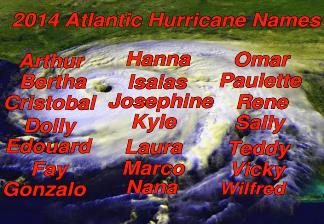May 15 marked the official start of the Eastern Pacific hurricane season, and thus far, one named storm has already formed. Tropical Storm Amanda formed well out to sea on Friday May 23, over 700 miles southwest of the southern tip of Baja California.
The next day, Amanda strengthened into a Category 1 hurricane, quickly becoming a major Category 4 hurricane by Sunday with maximum sustained winds of 155 mph. Amanda now holds the record as the strongest May hurricane ever observed for the Eastern Pacific. Still meandering across open waters, Tropical Storm Amanda will continue to gradually weaken over the next few days, posing no major threat to the U.S. or Mexico coastline. However, moisture associated with Amanda will bring increased rain shower activity to much of western and central Mexico through the weekend.
In the Atlantic, hurricane season kicks off on June 1, and thus far, no organized tropical activity has been observed. The million-dollar question many seem to ask at the start of the season is, how active will this year be? Each year, you will find varying answers to this question, as it is not easy science to predict. Forecasters at the National Hurricane Center believe that the development of El Niño, or a warming of the equatorial Pacific, will add to stronger wind shear in the Atlantic, thus reducing the strength of Tropical Storms and Hurricanes this year. However in the eastern Pacific, forecasters expect impacts of El Niño to aid in a more active season as it decreases wind shear, allowing for stronger Tropical Storms and Hurricanes to form.
For those on the east coast, don’t let this forecast lull you into a false sense of security. Last year, forecasters predicted an active season, when in reality, the overall hurricane season was quiet. In fact, the Atlantic hurricane season was the least active since 1950 and had the least number of hurricanes since 1982. In addition, no major hurricanes (Category 3 or higher) formed in either the eastern Pacific or Atlantic. 2013 marked eight years in a row without a major hurricane making U.S. landfall since Hurricane Wilma (2005). We are hopeful to extend this positive stretch into the 2014 season, but we have a long and uncertain road ahead of us. Both the eastern Pacific and Atlantic hurricane seasons generally peak in activity in September before concluding on November 30, making for a long, six-month season.
Here's a look at the Atlantic and Pacific hurricane names for the 2014 season:

